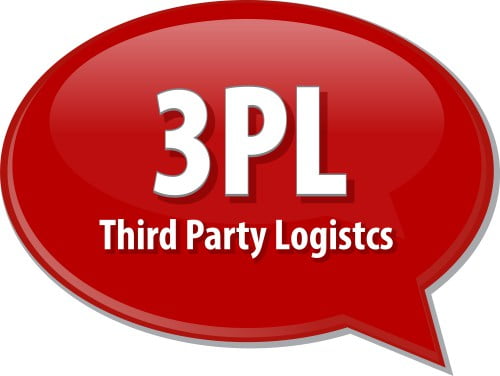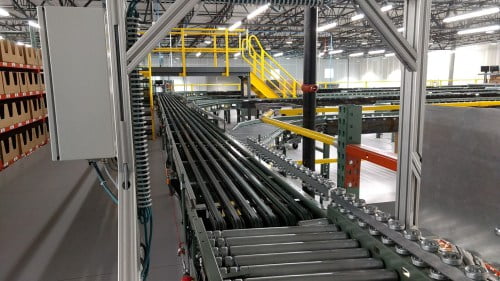Published December 20, 2016
1 – Know your operations capabilities and limits.
Everyone thinks they can do it all, this is not realistic all operations have limitations in space, technology, equipment, human resources, and capital. Knowing these areas of strengths and weakness will better enable you to choose the right customer / partner, rather than shooting from the hip at every potential customer that crosses your path.
In Retail, Wholesale, eCommerce, Pick and Pack, Case Pack, Musical Runs, Blister Packs, Cross-Dock, Transload, Boutiques, Majors, Big Box, and Ship To / Mark For, apparel, footwear, hard goods, and food products, the customers are all different. The way in which you may want the information presented to you by your customer, the internal preparation, approach and methodology, physical execution, and finally material handling considerations are all essential components to happy customers and end users. Keeping your customer beyond the initial term of the contract is the goal.
Bottom line: Know what your team can do well and look for those customers that fit your model.
2 – Know your potential customer.
You might know the name of your potential customer via their national or global brand image. Beyond what the average consumer knows from mass media, what do you actually know about them?
Are they owned by a private equity firm(s)? Who has controlling interest? Who is the handler from the PE firm for this customer? How long have they owned the brand? What is their exit plan? When does it come into play (halfway into your contract)? How deep are they leveraged? What is their debt to earnings ratio? What is their long term strategy for the brand? How long has the senior management been in place? What is the background of the CEO, COO, and CFO?
These may appear to be invasive questions but all of this information speaks to the stability of your potential customer. Very few people saw the collapse of (fill in the latest bankruptcy) coming. Be glad you do not have a building full of products, no orders to process, and a bank regulator who now pays you.
What is the history with their previous provider? What severed the relationship? Who fired whom? Are they beginners to the 3PL world? Most brands are not prepared for the cultural and operational differences between running their own distribution vs. outsourcing. The issues that long tenured internal processes created, (but we have always done it that way) are always painful and the education can be very costly, for all parties.
Most of these behaviors are displayed in the way they handle the bidding process and contract negotiations. This is where a consultant can provide enormous benefit and value to both sides. Balancing industry standard processes and language with customer expectations and demands is not easy and usually the customer / brand need coaching.
3 – Do not skimp on vetting the information presented to you, correct data is the key.
Just because they give you a spreadsheet with some data points on it, does not mean it is accurate. Yes, you sent them your standard requests for information, annual units, order size, order profile, number of active and inactive SKU’s, and a list of customers etc., but how can you be certain it is accurate? You have to learn how to ask questions such as, an attorney in a deposition.
It is usually not enough to get information from the tech staff that runs reports. The VP of Operations may or may not have their head fully grounded in the day to day operations, potentially not knowing when something is amiss with the reports you received. You need to speak directly to the operators handling the orders. The account managers, supervisors, and routing staff who know the details and fix the daily issues and / or problems that arise.
Example: Your new customer’s focus is eCommerce, like everyone else, it is growing dramatically. Are all SKU’s available online? Are they planning on increasing the number of SKU’s? What is their S&OP plan for eCommerce? On what type of data are they basing their projected growth?
The VP of Operations will tell you they do not do much customization for their eCommmerce orders. Instead talk to a couple of packers on the floor and see exactly how many inserts, seasonal or otherwise, and dunnage materials are expected to be presented in the outbound carton. Every single time your associate touches something it costs you money, therefore define the process with the people who currently do it every day.
It is not enough anymore to simply pick, pack, and ship. You need to understand how they are operating and subsequently what potential growth and attendant obstacles are coming your way. You need to operate and behave every day as a true partner to your customer’s business.
4 – Design the material handling systems for maximum flexibility and scalability.
One size fits all, this is incorrect. What works for one, does not necessarily work for another. The old rule of thumb was a minimum three or five year contract with your customer with automatic one or two year extensions. This is no longer the case. At Tompkins International we have seen the average contract go to two or three years with one year extensions.
Customers want flexibility and the ability to change, you should too. They are looking for leverage at the two year mark to compare pricing, shop the network, and see that they are getting the best value for their money. This can mean a shorter CapEx repayment getting you ‘caught up’ sooner vs. later. No one wants to restructure their distribution center or fulfillment center every few years.
Larger volume customers may warrant a unit sorter or perhaps a shipping sorter, and these in turn can allow you to provide faster and more efficient (think less labor) services allowing your company’s bottom line to shine a little more brightly.
Nothing beats flexibility in the design. Take the time or hire an experienced consultant to determine the best configurations for this particular customer’s order profile. Then, examine how you can make it work for others with similar goods. Seasonal changes and reconfigurations to handle peaks are now normal.
5 – Panic early, when onboarding.
Well not exactly panic, do not wait until a potential issue becomes an actual future problem. We all have those instances where something is discovered in the process, a small delay in the material handling equipment installation schedule or perhaps in the merchandise transfer process; and we wait to see if it will work itself out. It usually does not. React quickly and make corrective actions to solve the issue that is going to be a problem in the following weeks.
Having meetings with all interested parties involved, either physically or via online, is important. Address all of the issues immediately and put realistic contingencies in place.
I recently experienced a situation where a client was transitioning from one 3PL to another. The new 3PL suffered a small delay in their construction schedule that appeared not to be an issue, they did not tell anyone, content instead to work it out themselves. What they missed was the inbound containers, as well as, the inbound transfer merchandise impact, when considered together was enormous. Once everyone was made aware of the impending stoppage in two weeks due to space constraints, they changed gears and adapted. A disaster averted by the knowledge and collaborative efforts of those involved.
Onboarding a new customer to your business is always an exciting time. The sales effort has been successful. You are taking on a new partner in business and establishing a new and hopefully long-lasting relationship, both professionally and sometimes personally. Take the time up front to examine your own operations and the intimate details of your new customer. Yes, you need to sometimes walk away from ill-fitting partners. These are the hallmarks of a successful 3PL.
More Resources



